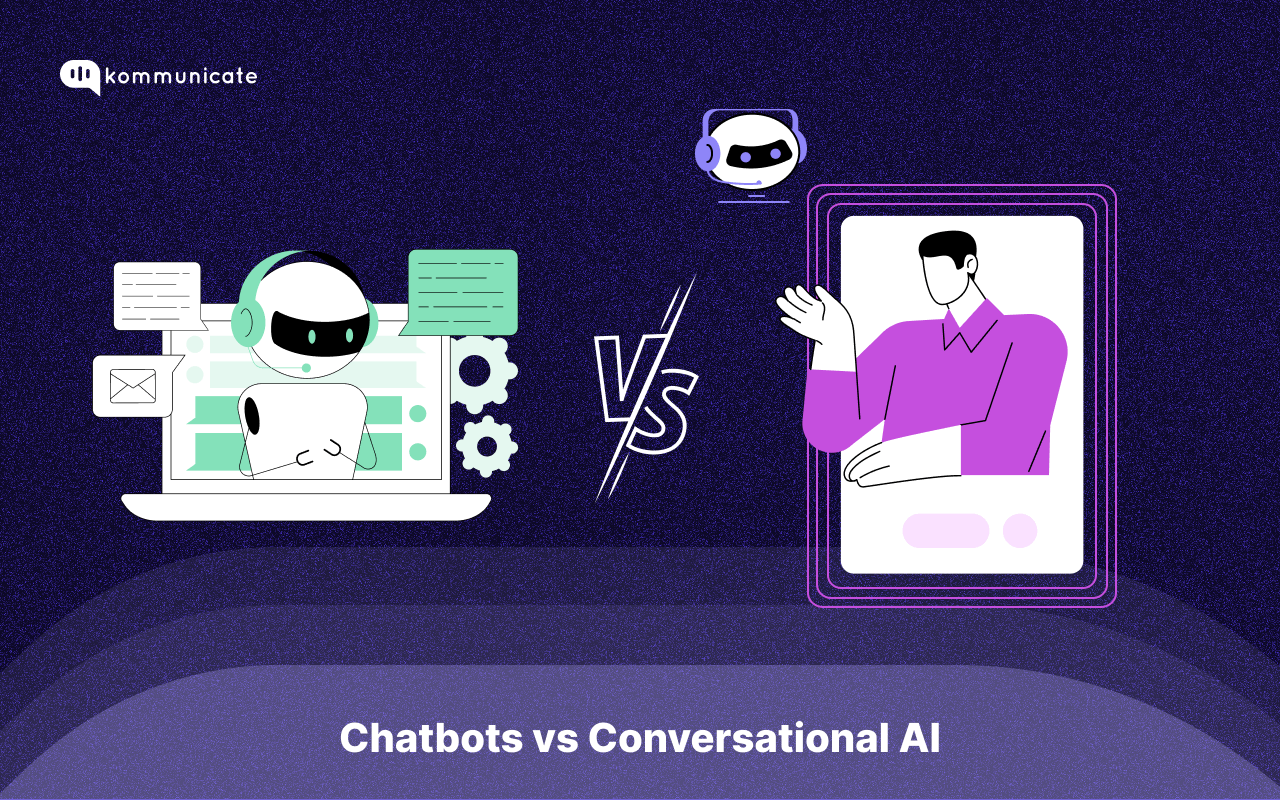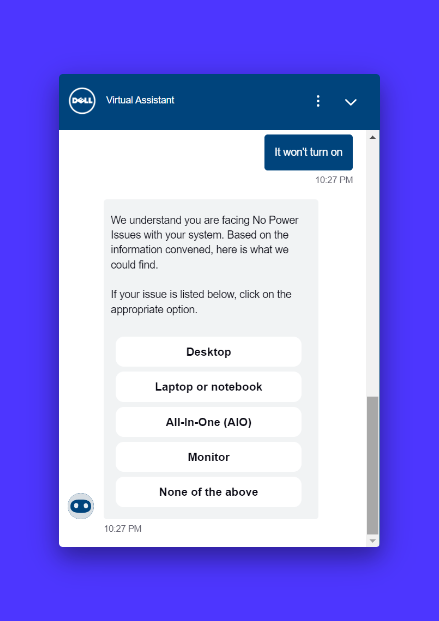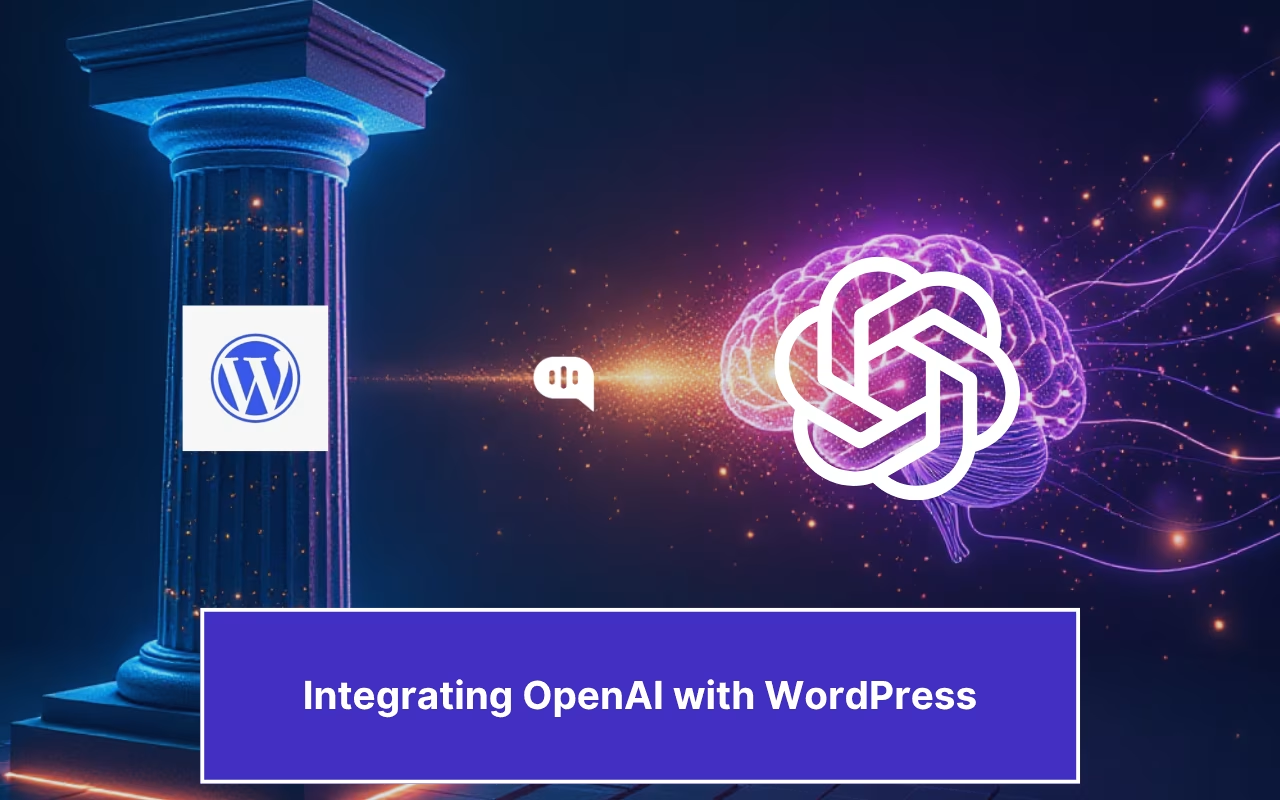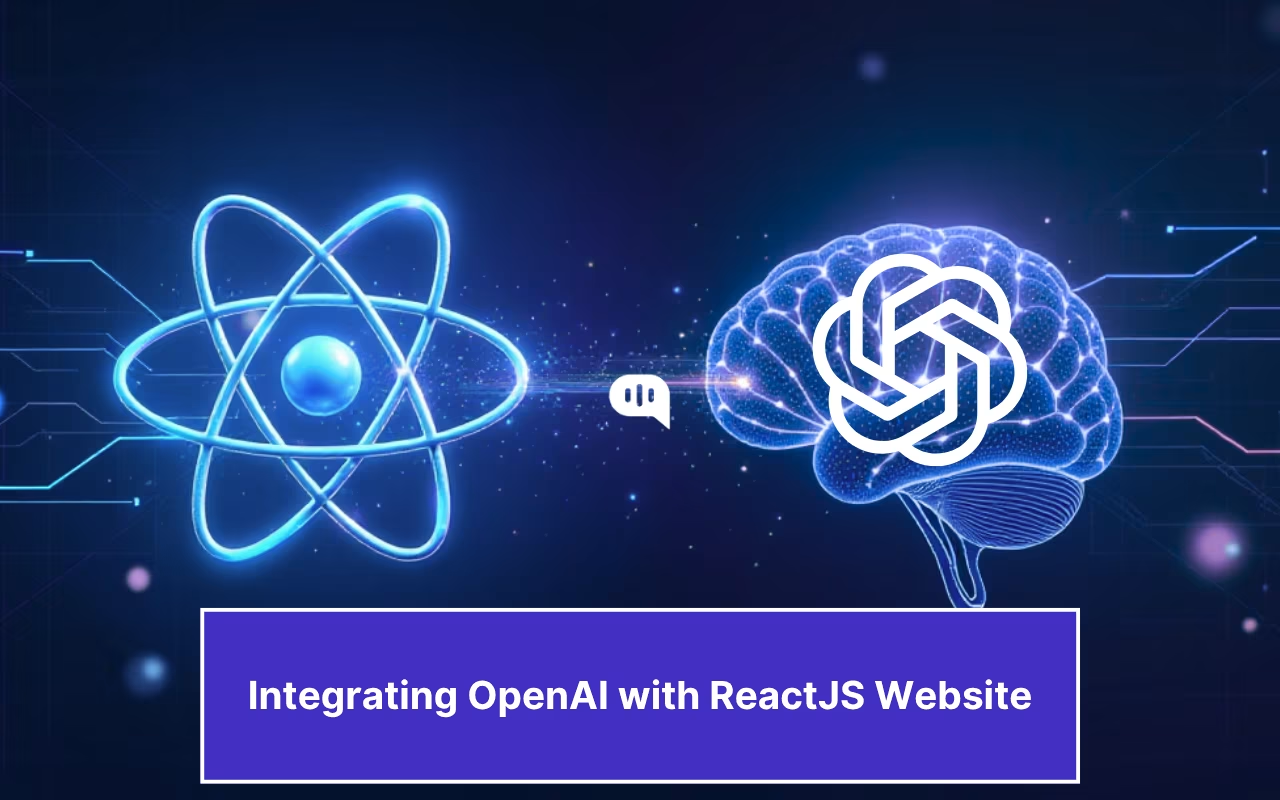Updated on February 13, 2025

AI is at the forefront of pretty much everything we do in 2024. From purchasing things online to crafting emails for work, the world has embraced AI with everything it has.
And there’s one key place where companies have really shown their passion for AI: chatbots and conversational AI.
In fact, it’s been found that live chat, email, and video are the top channels companies increased their use of as a response to the pandemic to adapt to changing needs and connect with the modern customer.
You’ve probably seen chatbots and conversational AI in action on websites whenever you message a company.
These features that allow instant responses came in with a bang to revolutionize customer service.
So, if you’ve been wondering what the difference is between chatbots and conversation AI and how to use them both, this article is for you.
Here’s what we’ll cover:
- What is a Chatbot?
- Examples of Chatbots in Action
- What is Conversational AI?
- Examples of Conversational AI in Action
- What’s the Difference between Chatbots and Conversation AI?
- How Can Kommunicate Help You Level up Your Customer Service?
Let’s dive in!
What is a Chatbot?
In the simplest of explanations, a chatbot is software that provides automated responses. It was created to mimic human interaction, and has been used quite frequently to automate customer service needs.
Chatbots generally interact through predefined rules and basic or simplistic wording with predetermined responses. For example, if a customer goes to a website and is trying to get an update on the tracking for their purchase, a chatbot with a “shipment tracking” option could easily expedite a generally longer process through customer service.
This not only facilitates things for the customer but can also save the brand big bucks since they have now automated the process instead of having someone behind the screen answer a relatively easy question.
To be able to interact as they do, chatbots rely on several technical building blocks that help them be so effective. The major building blocks used are listed below. Let’s take a look:
Natural Language Processing
Natural Language Processing is key to understanding and generating human-like text, involving tasks like tokenization, part-of-speech tagging, named entity recognition, syntax and semantic analysis, and sentiment analysis. NLP is great for providing what a chatbot needs to handle more complex and open-ended questions.
Machine Learning and Deep Learning
Machine learning and deep learning techniques, including supervised, unsupervised, and reinforcement learning, along with neural networks like recurrent neural networks and transformers, are used to train chatbot models on large datasets.
Data Processing and Storage
Data processing and storage are important for gathering, cleaning, and preparing data, as well as maintaining databases for conversation histories and user information. Gathering large volumes of data is extremely helpful for chatbots to be able to improve on future models.
As you can see, a chatbot is great for providing quick and direct answers to questions from customers and prospects.
Boost support efficiency and resolve queries faster with
AI-powered email ticketing from Kommunicate!3 Examples of Chatbots in Action
Whether you’re an insurance company, sales representative, or technical support service, you need some kind of automation to make your customer service workflow easier.
Ensuring that customers have the option for immediate responses from your brand is a way to solidify your great customer service.
This can help you build a strong brand reputation for your business.
Let’s take a look at 3 examples of chatbots in action when it comes to customer service.
#1 Uniqode

Not every QR code generator website has the greatest customer service, but Uniqode takes it to the next level. The brand allows visitors to select different options they need help with for automated replies and articles.
#2 Duolingo

This little green owl knows how to keep customers happy! When prospects visit its website, they are taken through a series of questions and answers that provide further insight into their language skills.
#3 Epic Sports

Epic Sports taps into the power of chatbots by providing predetermined options for customers to quickly resolve any questions or issues.
What is Conversational AI?
Conversational AI is basically a chatbot that has more advanced technology and takes the whole concept of a chatbot to the next level. Conversational AI leverages sophisticated AI technologies to understand and interact more naturally, like a dialogue, while chatbots often rely on simpler, rule-based systems.
Think of conversational AI as a more advanced version of chatbots. Users who interact with conversational AI usually have a more seamless and intuitive experience due to its ability to understand context and intent. For example, if a customer starts using a tone of anger, conversational AI is more prone to understand that the customer may be frustrated and needs to be connected with live service.
The technical building blocks of chatbots and conversational AI share many similarities, but there are distinct differences that set them apart. Let’s take a look at what those look like for conversational AI
Natural Language Processing
Conversational AI uses more advanced NLP techniques, including deep learning models like Transformers, to achieve a deeper and more nuanced understanding of language, context, and user intent. It allows the system to better understand the conversation instead of relying on predetermined answers and responses.
Dialogue Management
Conversational AI uses sophisticated dialogue management systems that incorporate reinforcement learning and probabilistic models to create more dynamic and flexible interactions. This allows for the technology to respond to you, like how we “speak” to Siri or Alexa.
Personalization
Unlike chatbots that only offer limited personalization, conversational AI leverages advanced machine learning techniques to provide personalized experiences based on user behavior, preferences, and historical data.
3 Examples of Conversational AI in Action
Having a conversation with AI isn’t as weird as it may seem. In fact, it’s very common in today’s world.
Let’s take a look at 3 examples of conversational AI in action.
#1 The Patel Firm

The Patel Firm understands that when people are looking for a lawyer, they want answers, and they want them quickly. On their website, you can see this in action through the use of conversational AI.
Once you arrive on the website, you are shown a pop-up chat box that starts a conversation with you and responds. The responses are based on the conversation you have with the bot and adapt as needed.
#2 Ulta

This cosmetics company prides itself on its swift customer service, so it’s no surprise that it is using conversational AI to help customers find answers to their questions.
From checking on birthday offers, like the example above, to checking in on the status of your order, Ulta encompassed the main questions and needs that their customers have.
#3 Dell

Dell embraces conversational AI to allow customers to troubleshoot technical issues they may have.
In the example above, you can see where a customer described the issue they were having, and through conversational AI, Dell can help customers receive the information they need to either troubleshoot the issue or connect them with the right person who can assist them.
By allowing customers this access, they can provide quick resolution, or at least steps toward it, to their customers.
What’s the Difference between Chatbots and Conversation AI?
Knowing what chatbots and conversational AI do is key to having success with these features. I mean, you wouldn’t run a Google campaign without understanding the ranking factors, so knowing all the ins and outs behind these is important to their success.
Sadly, poor communication may cost a company with more than 100 employees more than $524,569 annually. Customers need a quick solution to their questions or issues in this current era.
By tapping into chatbots and conversational AI, a brand ensures that it is easily accessible for the customer to engage and connect with them, which can help protect their business.
So, let’s take a look at the key differences between the two.
| Capability | Chatbot | Conversational AI |
| Functions on rule-based interaction. E.g., if a customer says this, then this is the response. | x | |
| Operates on predefined scripts and workflows. | x | |
| Uses advanced technologies like natural language processing, machine learning, and sometimes deep learning | x | |
| Understands the tone and handles complex interactions | x | |
| Can only handle specific tasks and is limited by the rules set by developers | x |
Grammarly’s Facebook messenger is a great example of a Facebook Messenger chatbot; it even identifies itself as a Grammarly bot and explains how it can understand simple phrases. The fact that Grammarly provides examples of simplistic phrases can help users understand that this is a chatbot and not a conversational AI.

Conversational AI is a form of chatbot, but it is taken much further as it uses more sophisticated technology.

Take our own Kommunicate chatbot as a great example of conversational AI. We have ours set up so that you can ask direct questions instead of just clicking on an option.
Yes, the simple chatbot option is there for more frequently asked questions, but it is also possible for customers and prospects to send more conversational questions that conversational AI can respond to.
Here’s a short video explaining the differences between Chatbots and Conversational AI:
How Can Kommunicate Help You Level up Your Customer Service?
At Kommunicate, we have everything you need to automate your customer service. Whether you decide to implement a chatbot with a simple structure or more advanced conversational AI, we’re here to help.

With Kommunicate, we have a simple, no-code-needed chatbot builder that will help you create the responses your customers need to their frequently asked questions and issues.

By putting your customer service on auto-pilot, you can enhance your self-service resolution rate, reduce average handling times, and cut down on operational costs with human-like conversations powered by generative AI.
You can deliver personalized service by assisting your customers at precisely the right time, at the right place, and in the language of their preference.
When it comes to chatbots and conversational AI, we’re here ready and waiting to help you take the next steps in amping up your customer service.
Wrapping It Up
Knowing how to tap into chatbot and conversation AI can be a game changer for how your brand handles customer service through AI.
While both chatbots and conversational AI make human-computer interaction easier, their underlying technologies, capabilities, and user experiences can, in fact, vary significantly.
So just keep in mind, chatbots are best for straightforward tasks with predictable inputs, while conversational AI excels in more complex and adaptive interaction scenarios.
Both are beneficial and can go hand in hand, especially when it comes to improving your brand’s customer response. So, evaluate what your brand’s current needs are and if you should implement a chatbot or a chatbot with conversational AI. The complexity of your customer’s needs should be the determining factor behind what you choose to implement for your brand.
Either way, your brand can be quickly set up for customer service success and, subsequently, increased brand loyalty, thanks to the swift resolutions they may receive.
Ready to try out chatbots and conversational AI for yourself? Sign up today for our free trial!

Freya Laskowski is the founder of SERPManiac, an agency focused on helping brands scale their organic growth with content marketing and SEO services.
She is a quoted contributor in online publications like Business Insider, Fox Business, Yahoo Finance, and the Huffington Post. She also owns CollectingCents– a personal finance blog that she grew from the ground up.





